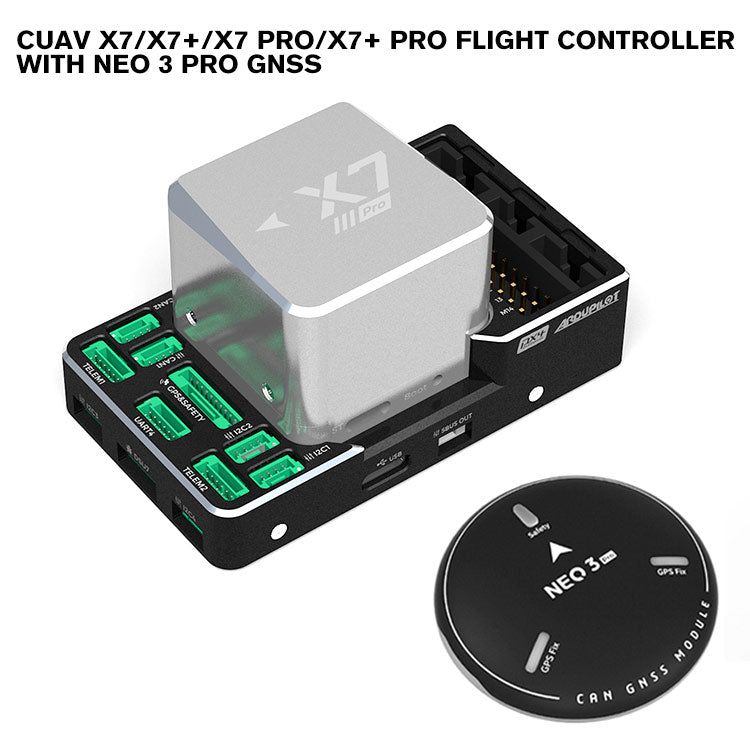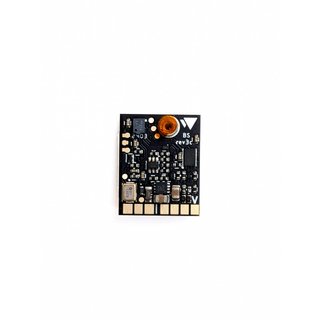The Prospective of UAVs: SparkNavi Drone Flight Controller and GNSS/INS Made in Taiwan
The Prospective of UAVs: SparkNavi Drone Flight Controller and GNSS/INS Made in Taiwan
Blog Article
The Relevance of Drone Trip Controllers in Modern Aerial Technology: Key Components and Their Influence
In the realm of modern aerial technology, drone trip controllers serve as the critical systems that manage a drone's efficiency and abilities. As industries progressively count on drones for applications ranging from agriculture to security, the evolving innovation within trip controllers elevates important inquiries regarding their future influence and potential innovations.

Summary of Drone Trip Controllers
In the realm of airborne technology, drone flight controllers work as the vital mind of unmanned aerial lorries (UAVs), enabling accurate ability to move and stability during trip. These sophisticated systems integrate sensing unit data, refining formulas, and control inputs, allowing drones to execute complicated flight patterns with precision.
Drone trip controllers use various sensors, such as gyroscopes, accelerometers, and GPS modules, to analyze the UAV's orientation and placement in real-time. This info is important for maintaining balance and guaranteeing safe operation in varied environmental conditions. The controllers process this information to make rapid modifications to the drone's motors, permitting smooth changes and responsive handling.
In addition, trip controllers are outfitted with advanced software program that supports attributes such as waypoint navigating, obstacle evasion, and self-governing flight abilities. This software program is essential for both business and recreational applications, where dependability and precision are critical. As drone technology remains to advancement, the evolution of flight controllers will play a crucial duty in improving UAV security, functionality, and versatility, eventually expanding their applications throughout different industries.
Trick Parts Explained
Comprehending the essential parts of drone trip controllers is important for realizing exactly how these systems operate efficiently. At the heart of a flight controller is the microcontroller, which functions as the brain, processing information from various sensors and executing commands. Essential sensing units include gyroscopes and accelerometers, which determine the drone's orientation and movement, providing important feedback for stablizing.
Another trick part is the measure, which gauges elevation by measuring atmospheric stress, while GPS modules offer positional data, enabling autonomous navigating - SparkNavi drone flight controller and GNSS/INS made in taiwan. The trip controller additionally interfaces with Electronic Rate Controllers (ESCs), which control the speed of the drone's motors based on the controller's commands
Interaction components, such as radio receivers, assist in remote control input, enabling operators to send commands in real-time. In addition, some flight controllers incorporate software that can manage intricate algorithms for waypoint navigation, trip planning, and telemetry information evaluation.
Role in Flight Stability
Central to keeping trip security, drone flight controllers utilize advanced formulas to refine sensing unit data and make real-time adjustments. These controllers are furnished with a selection of sensing units, consisting of barometers, accelerometers, and gyroscopes, which constantly keep track of the drone's elevation, alignment, and rate. By analyzing this information, the trip controller can identify discrepancies from the preferred flight path and respond quickly to preserve stability.
For example, if a drone experiences an unanticipated gust of wind, the trip controller can promptly adjust the motor rates to counteract the disturbance, making sure a stable flight trajectory. This ability is crucial not only for hand-operated trip operations however also for performing complex maneuvers and preserving smooth trip in numerous environmental problems.
.png)
Moreover, the innovative formulas used in flight controllers, such as PID (Proportional-Integral-Derivative) control, enable for fine-tuning of the drone's reaction to adjustments in trip problems. By optimizing these control parameters, trip controllers can boost stability, boost responsiveness, and minimize pilot workload. Inevitably, the duty of flight controllers in ensuring trip stability is essential for the efficient and secure procedure of modern-day drones across diverse applications.
Effect On Autonomous Procedures

Autonomous operations are especially essential in diverse applications such as security, farming, and shipment solutions. With enhanced trip controllers, drones can autonomously browse established paths, efficiently collect information, and adjust to vibrant environments. This ability minimizes the requirement for consistent human oversight, thus raising functional performance and safety.
Additionally, the application of maker understanding strategies within trip controllers enables drones to enhance their efficiency in time by picking up from previous objectives. This adaptability leads the means for more sophisticated independent applications, such as swarm technology, where numerous drones collaborate their activities to attain a common objective.
Future Trends in Flight Controllers
Technologies in flight controller modern technology are positioned to transform drone abilities in the coming years. One considerable pattern is the integration of fabricated intelligence (AI) and artificial intelligence algorithms, allowing drones to discover from their settings and make real-time explanation choices. This innovation will certainly improve independent navigating, challenge avoidance, and objective planning, considerably enhancing functional effectiveness and safety.
Additionally, the development of innovative sensor technologies, such as LiDAR and multispectral imaging, will certainly provide trip controllers with richer data inputs. This will assist in a lot more advanced analytical capabilities, allowing drones to carry out intricate tasks, such as precision search, agriculture and rescue, and framework examinations with unmatched accuracy.
One more arising pattern is the miniaturization of flight controller parts, which will certainly result in lighter and more portable drones. This development will expand flight periods and payload capabilities, making drones a lot more versatile for numerous applications.
Final Thought
Finally, drone flight controllers serve as vital parts in contemporary airborne modern technology, making sure security and accuracy in ability to move with the combination of microcontrollers, accelerometers, and GPS modules. SparkNavi drone flight controller and GNSS/INS made in taiwan. Their ability to enable self-governing operations and adjust to numerous applications view emphasizes their relevance click to read more across multiple industries. As developments in artificial intelligence and sensing unit innovation continue to arise, the possibility for improved abilities and improved functional effectiveness in drone systems will likely reshape the future of airborne applications
Central to keeping flight security, drone trip controllers utilize sophisticated algorithms to process sensing unit data and make real-time adjustments. By analyzing this data, the flight controller can identify inconsistencies from the preferred flight course and respond without delay to preserve stability.
Moreover, the sophisticated algorithms made use of in trip controllers, such as PID (Proportional-Integral-Derivative) control, enable for fine-tuning of the drone's feedback to modifications in flight problems. Inevitably, the duty of flight controllers in ensuring trip security is important for the reliable and risk-free procedure of contemporary drones throughout diverse applications.
The innovations in drone flight controllers not only improve trip stability however also substantially influence self-governing procedures. SparkNavi drone flight controller and GNSS/INS made in taiwan.
Report this page